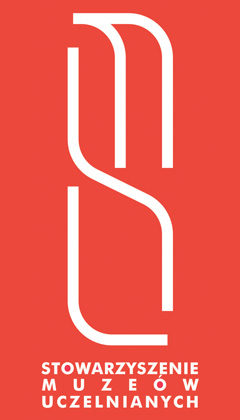Museum of the John Paul II Catolic University
Al. Racławickie 14
20-950 Lublin
Tel. (81) 445 40 29
muzeum@kul.pl
http://muzeum.kul.pl
Free admission
The museum is open Mondays – Fridays 12 noon – 4 pm
Group visits (advance booking is essential. For safety reasons no more than 25 visitors are allowed at any one time).
Director: prof. Agnieszka Bender
Staff: Anna Szlązak-Nowak MA, Katarzyna Szumlak MA
The Museum of the John Paul II Catholic University of Lublin (commonly known as KUL) was established on 1 September 2016 by combining three entities which functioned at the university. The core of the collections comprised works of art amassed by the former university museum founded in 1932 by the Rev. Canon Jan Władziński (1861–1935) and which operated under different names until 2016. It was supplemented with documents and memorabilia collected in the years 2008–2016 by the university’s Museum of the History of KUL and also by archaeological artefacts excavated in Piotrawin and at Czwartek Hill which were housed in the Faculty of Polish Archaeology of the Institute of History. The donation made by Rev. Jan Władziński included ‛a collection of historical memorabilia and period items from various parts of Poland’ which he had amassed over the years. These works of art even included a few natural curiosities such as ‛a bone of a sawfish’ and ‛two specimens of a fossilized tree from Tereszpol’. The collections were also enriched by a donation made by Prof. Kazimierz Michałowski (1901–1981) in 1938 which consisted mainly of antique figurines and vessels discovered in Edfu. The growth of the collections was halted by the outbreak of the Second World War. In December 1939 the collections were ‛safeguarded’ by the Germans, and never returned. After the war, the university decided to continue its tradition of having a museum. Thanks to the involvement of the university authorities and the generosity of church-based institutions and private donors, over the past 60 years it has been possible to amass a new collection consisting of more than 1,700 items. The donation made by the Curia of the Archdiocese in Wrocław in 1956 has a special place in the museum’s postwar history; it included very valuable objects of mediaeval and early modern Silesian art. Likewise a collection of sacred sculptures – located in the Central Storehouse of the Ministry of Culture and Art in Kozłówka as ‛property belonging to noone’ – was also donated to KUL for educational purposes by decision of the Central Board for the Protection of Museums and Historic Monuments. The purchases made in DESA antique shops in the early 1960s, which included excellent paintings by Marten van Valckenborch, Hendrik Verschuring, Abraham Storck and others, are also noteworthy. Important donations were also made by Olga and Tadeusz Litawiński from Zakopane (1986), Krystyna Hartleb from Toruń (1986), Stanisława and Tadeusz Witkowski from Lublin (1991) and Joanna Gliwa from Warsaw (1992) thanks to which the museum now houses an excellent collection of 19th- and 20th-century Polish paintings. Particularly noteworthy are the paintings and drawings of some of the best Polish artists of that time such as Jan Matejko, Piotr Michałowski, Józef Chełmoński, Włodzimierz Tetmajer, Jacek and Rafał Malczewski, and Jerzy Kossak. The porcelain collection, which includes pieces from some of Europe’s best manufactories in Meissen, Berlin and Vienna, is also of great value. Since 2012 large exhibitions have been organized presenting the museum’s own collections as well as objects from other institutions. Until 2016 these were organized under the aegis of the Workshop of the Museum Collections of the Institute of Art History at the Catholic University of Lublin. However, since 2016 they have been part of the statutory activities of the newly established museum whose official opening was marked by the exhibition ‛100 na 100. Sto najcenniejszych dzieł sztuki ze zbiorów KUL na 100-lecie KUL’ (100 out of 100. One hundred most valuable works of art from the KUL Collection to mark the centenary of KUL) held in the Royal Castle in Warsaw – Museum (13 October 2016 – 31 January 2017). Another important cultural event was the first monographic exhibition of the Galician artist, Jerzy Turnau (1869–1925) ‛Ars e[t] terra’, as well as an exhibition of the most valuable paintings and sculptures from Krzysztof Musiał’s collection entitled ‛Boznańska, Wyczółkowski, Dunikowski i inni. Kolekcja Mistrzów Krzysztofa Musiała’ (Boznańska, Wyczółkowski, Dunikowski and others. Krzysztof Musiał’s Collection of Masters).
Krzysztof Przylicki PhD













